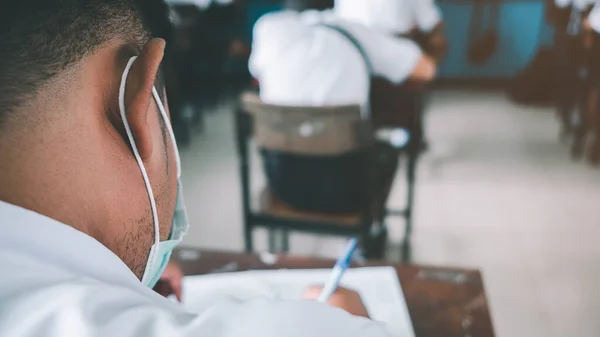
The latest national scores fell with a thud: American 12th-grade reading and math test scores are now at all-time lows since the tests have been administered. For teachers, policymakers, and parents, the numbers aren’t statistics they’re a flashing red warning light that the classroom pandemic recovery remains far from realized.

1. Historic Lows in Basic Skills
In the spring of 2024, hundreds of thousands of high school seniors took the math and reading tests on the National Assessment of Educational Progress (NAEP). The average math score was the lowest since 2005, and reading fell below any level since 1992. Just 22% were proficient in math and 35% in reading. More disturbing, the proportion of students below the “basic” level can’t do basic work has risen. Lesley Muldoon, the executive director of the National Assessment Governing Board, cautioned, “Students are stepping forward in life with fewer skills and less knowledge in basic academics than their predecessors a decade ago.”

2. A Decline Years in the Making
While COVID-19 heightened the problem, these declines began before the pandemic. Experts like National Center for Education Statistics’ Matthew Soldner note that “scores for our lowest-performing students are at historic lows continued declines that began more than a decade ago.” Reasonings range from increased screen time and shorter attention spans to shifts in teaching methodologies that favor shorter texts over tenacious reading.

3. Pandemic Disruptions Exacerbated the Decline
Pandemic impact was global, with 7–12 months of lost schooling on average in nations that experienced prolonged closures. The U.S. experienced steeper dips in districts that were remote for longer. Chronic absenteeism almost doubled to pre-pandemic rates, and teacher turnover, student misbehavior, and digital distractions have made recovery challenging.

4. Achievement Gaps Are Expanding
The gap between low- and high-achieving students has widened, with students already behind becoming increasingly behind. Girls’ scores have fallen faster than boys’, wiping out years of progress in closing gender gaps in STEM. Boys now score higher than girls in nearly nine in ten districts in math, a shift that is associated with the disappearance of programs that originally promoted girls’ participation in STEM and with the re-emergence of vestigial stereotypes.

5. Global Patterns, Local Consequences
Global trends are the same: low-income and lower-performing students have been hit hardest. The relationship between poverty and achievement was also made more direct by the pandemic in nearly all countries, so poverty is an increasingly accurate predictor of success in school. If nothing is done, these gaps will harden into lasting disparities in access to college and readiness for the workforce.

6. The Economic Stakes Are Enormous
Learning loss is not just an education issue it’s economic, too. Experts estimate the drop in American math scores between 2019 and 2022 may lower lifetime earnings of pandemic-generation students by $900 billion. Globally, the economic cost of lost learning may be as much as $17 trillion. For the United States, that means an unprepared workforce at a time when technological change demands more, not fewer, skills.

7. Evidence-Based Routes to Recovery
Silver lining: research points to effective strategies. In-person tutoring, high dosage several times a week and aligned with classroom instruction has shown measurable gain. Summer schools of longer duration, small-group focused instruction, and increased mental health services can speed catch-up. The Annie E. Casey Foundation is calling for states to use last federal relief funds to put students’ “social, emotional, academic and physical well-being first.”

8. Closing Chronic Absenteeism
Learning requires attendance, but more than a quarter of students were chronically absent during 2022–23. Experts prefer positive, nonpunitive approaches, like family involvement, transportation choices, and positive school climates, to punitive measures that can push away students and parents.

9. Restoring STEM Confidence in Girls
Curricula connecting science and mathematics to real-world applications, encouraging collaboration, and making it more mainstream for girls to enroll in advanced courses are necessary to reverse the gender gap. As HawaiʻiKidsCAN’s David Sun-Miyashiro describes, “Making it more normalized for people of all different backgrounds to be in these programs… is pretty important.”

10. Acting Before the Window Closes
Federal pandemic relief funds must be disbursed by Sept. 30, 2024. Slippage could result in billions left unspent. Policymakers and administrators are closing windows of opportunity to invest in interventions that have the potential to prevent an entire generation from entering adulthood with fewer opportunities and skills.
The data is sobering, but it’s also a call to action. The tools to reverse these trends exist what’s needed now is the will to deploy them at scale, with urgency and equity at the center.


